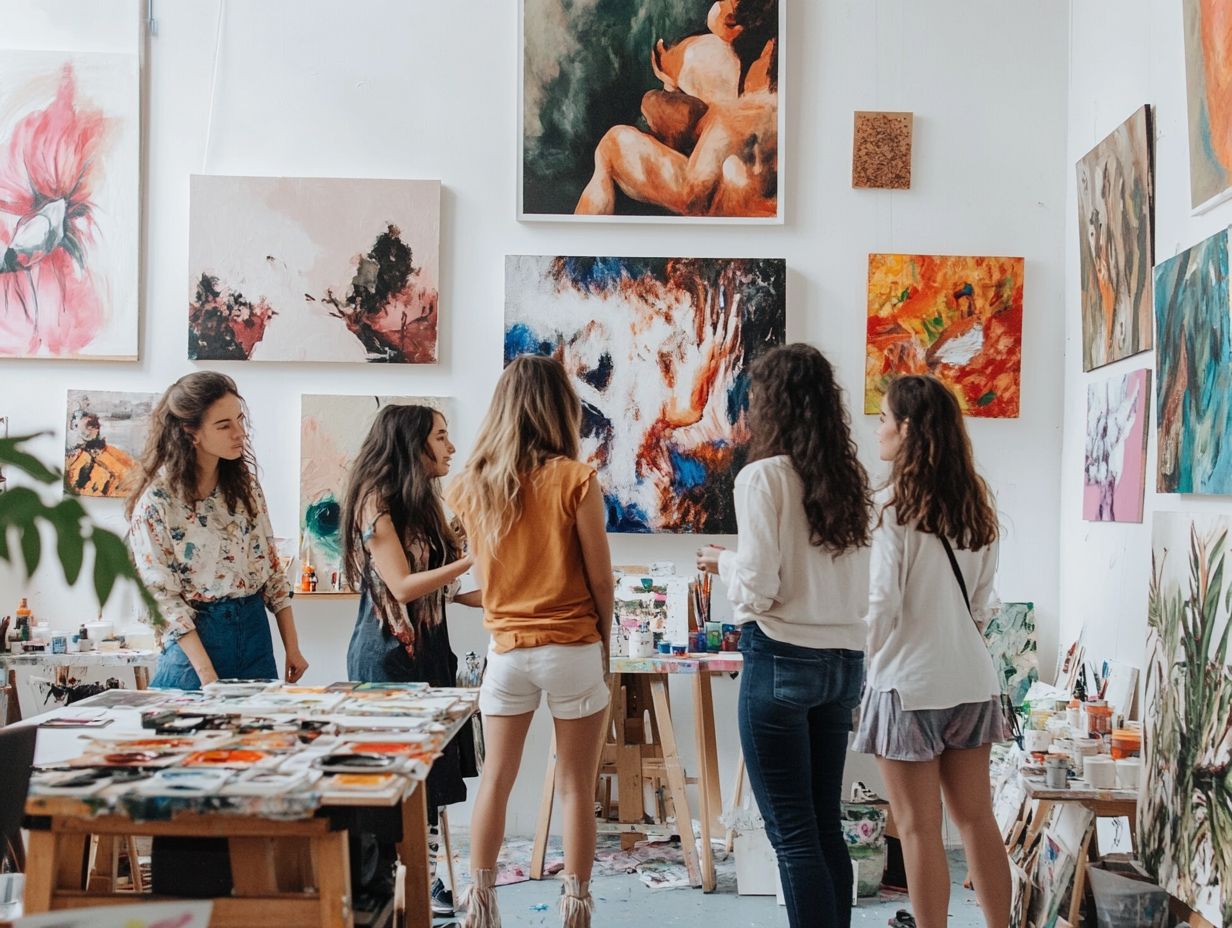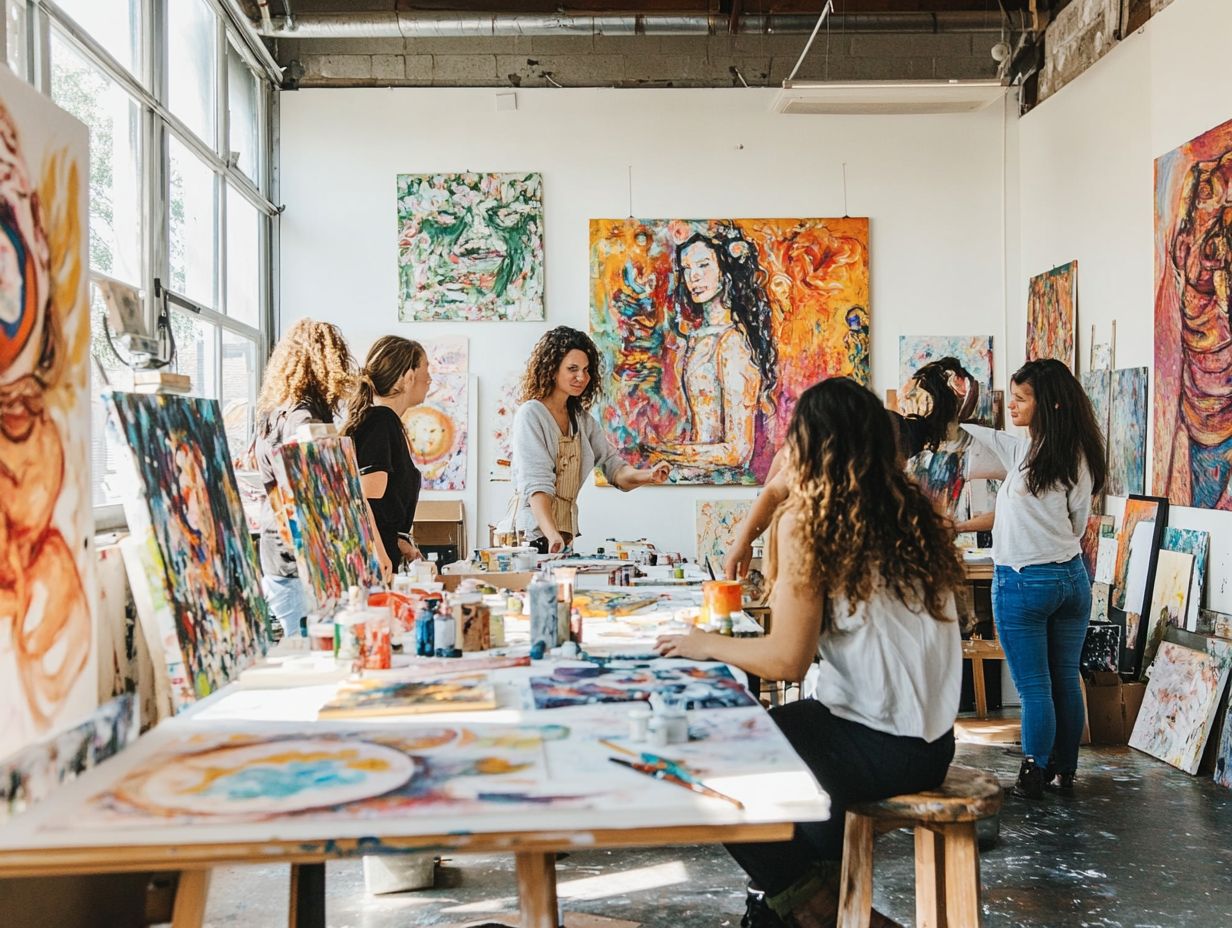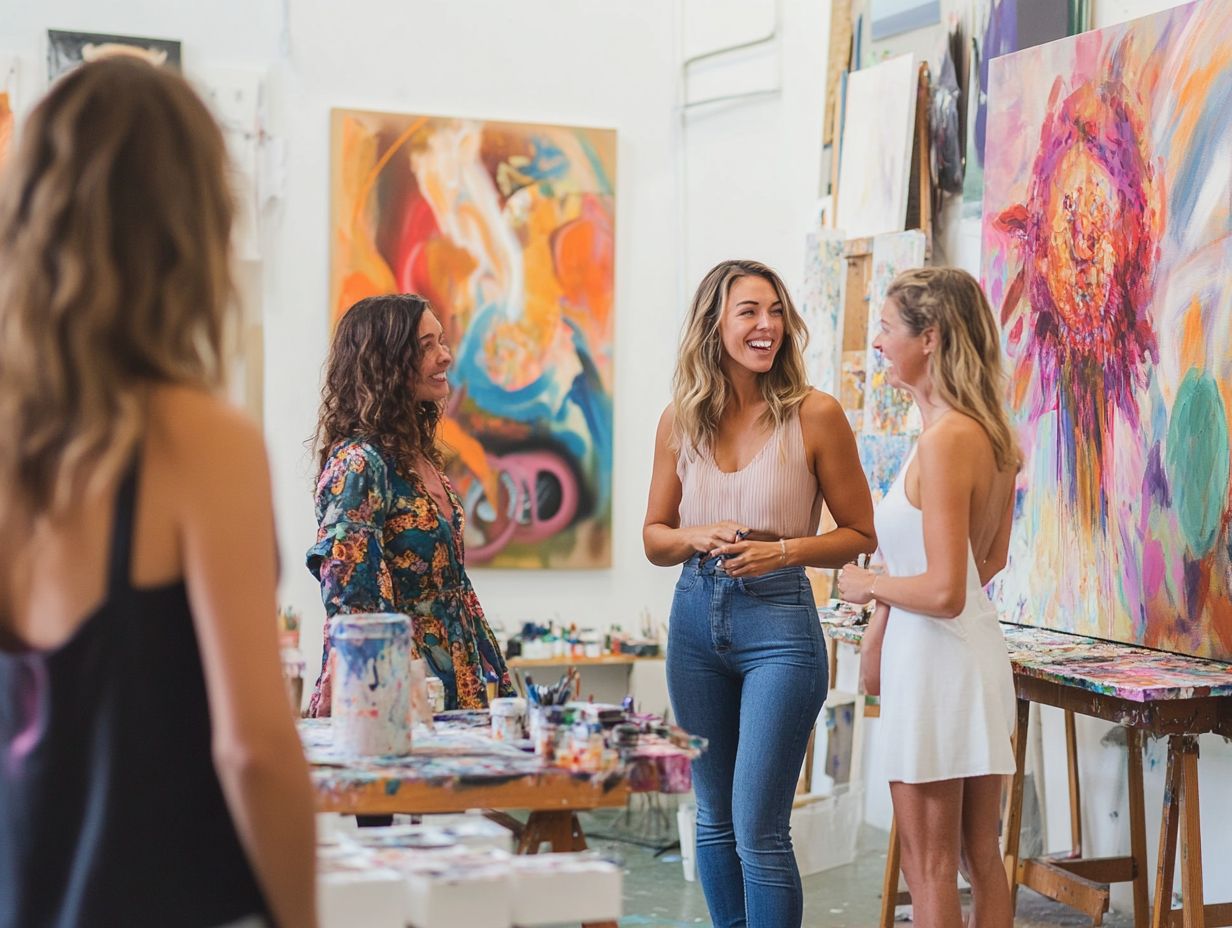In recent years, the concept of the female gaze has emerged as a powerful counterpoint to traditional representations of women in art and media. This discussion delves into the multifaceted nature of the female gaze, tracing its historical roots and highlighting key figures and movements that have influenced its evolution.
We will explore how modern women artists challenge the male-dominated narrative, as well as examine examples in literature, film, and music that illustrate how this perspective is redefining artistic expression.
Criticisms and controversies surrounding the female gaze will also be addressed, considering its future in a world that increasingly values diverse voices. Join us as we uncover how women are transforming the art world and reshaping cultural narratives.
What is the Female Gaze?

The female gaze is a concept that describes how the arts and visual culture can portray women from a gender perspective that give the power tos female representation and challenges the traditional notion of the male gaze.
This perspective fosters new aesthetics and art histories, enabling women artists to create and express their identities and lived experiences. In doing so, it contributes to broader discussions surrounding gender relations and feminist theory.
Defining the Concept
The concept of the female gaze has its roots in feminist art, where artists aim to portray women not merely as subjects but as individuals with their own stories and identities. This perspective emerged from early feminist movements that sought to redefine traditional gender identities and artistic expression.
Artists began to question the representation of women within both historical and contemporary art, often reflecting broader societal narratives that have marginalized their experiences. The female gaze shifts the focus from a male perspective to one that acknowledges the complexities of female identity, allowing women to reclaim their narratives.
This transformation in artistic representation aligns with feminist ideals and encourages a deeper consideration of how gender identity influences the production and perception of art worldwide.
History of the Female Gaze in Art
The history of the female gaze in art illustrates how various art movements and the works of influential women artists have challenged traditional depictions of femininity. This challenge has had a significant cultural impact, reshaping the art world and fostering important conversations about representation and gender equality.
Key Figures and Movements

Key figures and movements within the female gaze have significantly influenced the development of feminist art, highlighting the diverse voices of women artists and the crucial importance of representation in visual culture. This movement illustrates how the experiences and perspectives of women have often been overlooked, prompting a reevaluation of dominant narratives in art history.
Prominent artists such as Judy Chicago, particularly through her groundbreaking work ‘The Dinner Party’, challenged traditional portrayals of femininity. Meanwhile, the feminist artists’ movement of the 1970s sought to establish a vocabulary that resonated with women’s lived experiences.
The rise of contemporary collectives like the Riot Grrrl movement has further intertwined art with activism, connecting individual narratives of identity to broader critiques of society and culture. By reclaiming their narratives, these artists not only reconstruct their own identities but also stimulate essential conversations within society regarding issues of gender, culture, and power dynamics.
Modern Women Artists Breaking Barriers
Contemporary women artists are making significant strides in the art world by leveraging their platforms to advocate for gender equity and emphasize the importance of visibility in art. They are pushing creative boundaries and challenging traditional norms in the process.
Challenging the Male Gaze
The female gaze serves as a challenge to the male gaze, with feminist discourse seeking to redefine representation and give the power to women’s narratives through art and visual storytelling. Contemporary women artists are actively engaging with this discourse, using their art to confront societal norms and express a range of diverse experiences.
By addressing the male gaze, these artists reclaim their identities and reshape conversations around femininity, power, and agency. Utilizing various mediums, they create visuals that explore the complexities of womanhood, allowing for a nuanced examination of identity politics.
This shift in representation not only deepens the understanding of women’s lives but also encourages audiences to reconsider social constructs surrounding gender and sexuality, thus enriching the artistic landscape.
Impact on the Art World

The impact of the female gaze on the art world has been transformative. It has fostered the development of artistic communities that prioritize cultural representation and challenge the status quo through feminist art practices.
This shift has not only encouraged collaboration among artists but has also resulted in exhibitions that highlight diverse perspectives and underrepresented voices. By focusing on narratives that more accurately reflect the experiences of women and marginalized groups, the art world is gradually creating a more inclusive environment.
As audiences become increasingly aware of the historical inequities in artistic recognition, the reception of women’s contributions is changing. The growing acceptance of the female gaze is prompting a re-evaluation of traditional aesthetics, which will ultimately redefine the contemporary art landscape.
Female Gaze in Different Art Forms
The female gaze is evident in various forms of art beyond visual media, such as literature, film, and music. In these creative outlets, female artists rewrite narratives and present alternative perspectives.
Examples in Literature, Film, and Music
Examples of the female gaze in literature, film, and music can be found in various works created by female artists who either challenge the patriarchal perspective or offer new forms of artistic expression that center on female experiences and viewpoints.
In literature, Margaret Atwood’s The Handmaid’s Tale is a dystopian novel that delves into the lives of women living under a patriarchal regime. It encourages readers to consider the implications of gender oppression through the lens of a woman’s experience.
In film, Greta Gerwig’s Lady Bird is a coming-of-age story that portrays the complex and genuine relationship between a young woman and her mother, highlighting the challenges of growing up as a young woman in a middle-class American family. Gerwig’s film authentically captures the female experience, resonating with many women and audiences alike.
In music, Beyoncé’s song Flawless exemplifies the female gaze in pop culture by celebrating female beauty while incorporating themes of feminism, give the power toment, and resilience. The song’s lyrics and music video deliver a powerful message about female self-acceptance and strength.
Together, these examples of the female gaze underscore its ability to transform narratives and influence cultural conversations about gender.
Criticism and Controversy Surrounding the Female Gaze

The concept of the female gaze has faced criticism and controversy, despite its give the power toing intentions. This includes debates surrounding gender essentialism and backlash from traditional perspectives that question its validity and influence in the art world.
Debate on Gender Essentialism
The debate surrounding gender essentialism in the context of the female gaze raises significant questions about representation and how feminist theory interprets gender identity and roles within art practices.
It urges us to closely examine the impact of definitions of femininity and masculinity on the processes of art-making and art reception. By addressing the essentialist perspective, both scholars and artists can explore how these narratives shape societal expectations of individuals and influence the portrayal of women across various artistic forms.
The female gaze offers an alternative to traditional male perspectives, challenging normative assumptions about gender roles. As scholars continue to delve into these topics, it becomes evident that the intersection of gender essentialism and feminist critique not only broadens artistic practice but also fosters a more nuanced conversation about identity and representation in the contemporary art world.
Backlash and Misinterpretation
The backlash against the female gaze often stems from a misunderstanding of its objectives and a reluctance to challenge entrenched social norms. This reaction ignites discussions about the necessity of cultural representation in art.
Many argue that this perspective threatens established power structures, as it could prompt a re-examination of how gender and sexuality are represented, potentially disrupting conventional narratives. Such discourse may lead to ongoing debates about what constitutes acceptable expression in artistic forms.
As artists advocate for a more nuanced conversation about the female experience, the dialogue surrounding this topic expands, highlighting the need for a greater diversity of voices in the creative space.
These dynamics not only influence the art world but also enrich broader societal discussions about gender parity, identity, and the role of women as both creators and subjects within visual narratives.
Future of the Female Gaze in Art
The future of the female gaze in art is anticipated to undergo significant evolution and innovation, as artists strive to enhance representation and redefine gender dynamics in contemporary visual culture.
Continued Progress and Representation
Ongoing advancements in the recognition and portrayal of the female gaze signify a cultural shift toward inclusivity, driven by feminist movements and new artistic communities dedicated to amplifying marginalized voices. This fresh perspective not only critiques the patriarchal narratives that dominate the art world but also contributes to a reexamination of social norms by highlighting stories that are often overlooked.
By centering women’s experiences across various media, artists and creators are weaving a richer tapestry of representation that fosters empathy and understanding. The significance of expressing the female gaze extends beyond artistic merit; it embodies a crucial dialogue about identity, power, and the complex nature of womanhood.
This movement calls for inclusivity and advocates for the creation of spaces where the expressions of all individuals, regardless of gender, can celebrate the beauty of their unique experiences.
